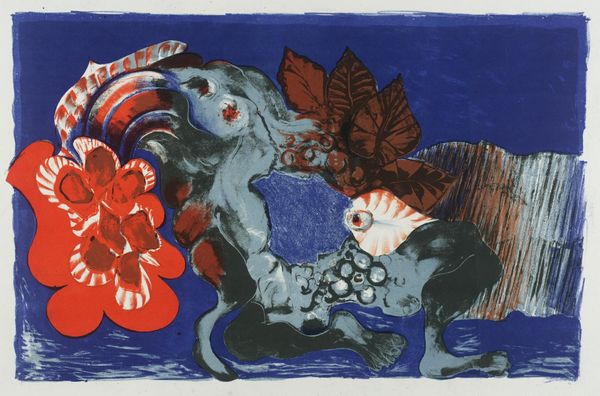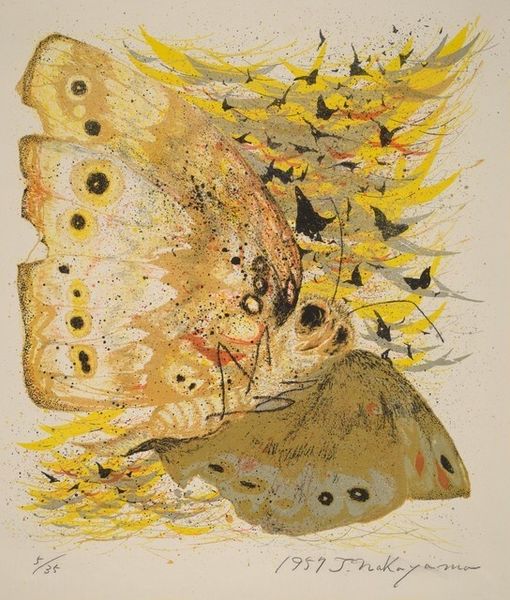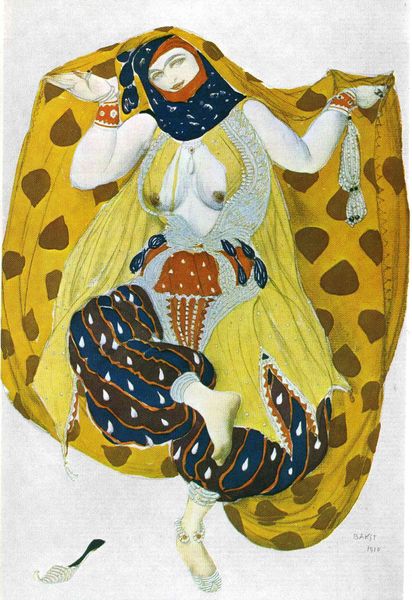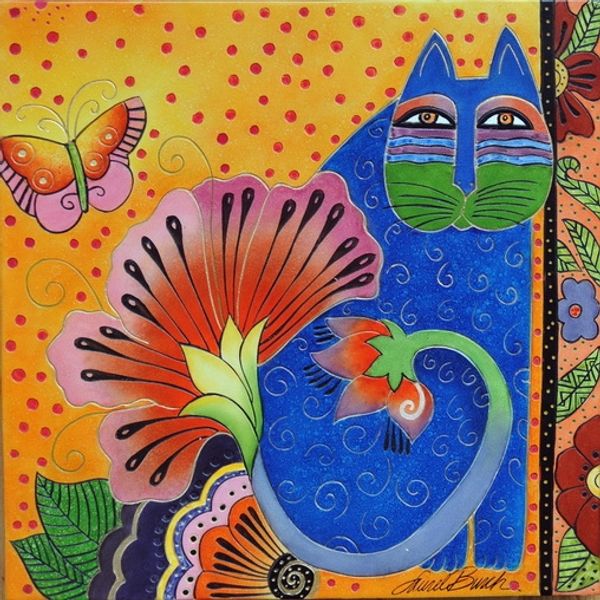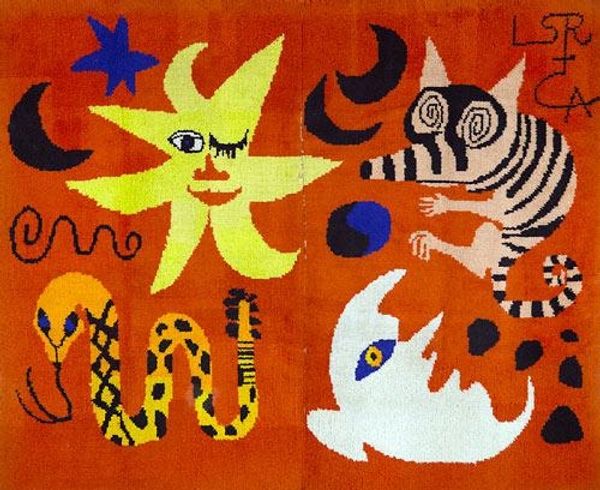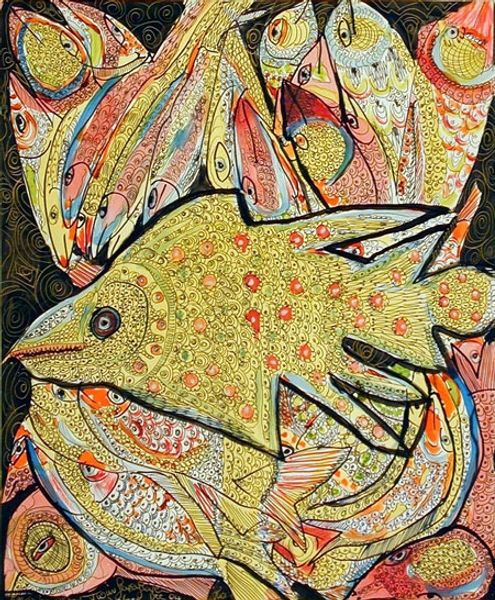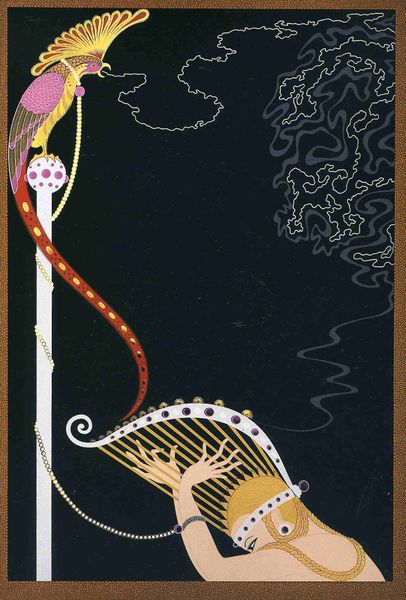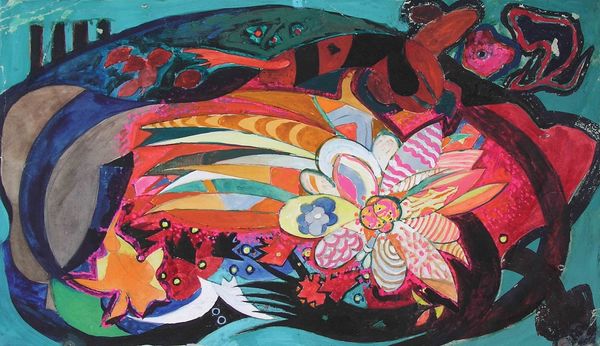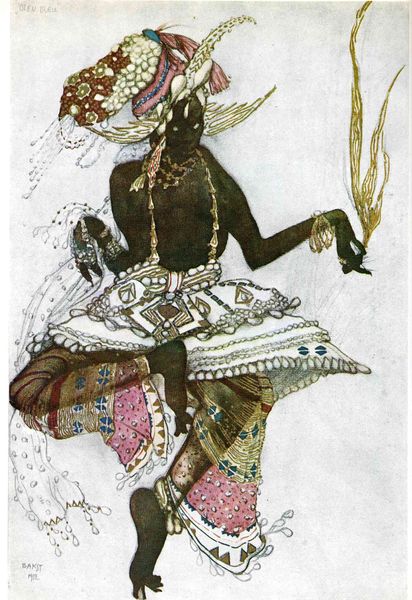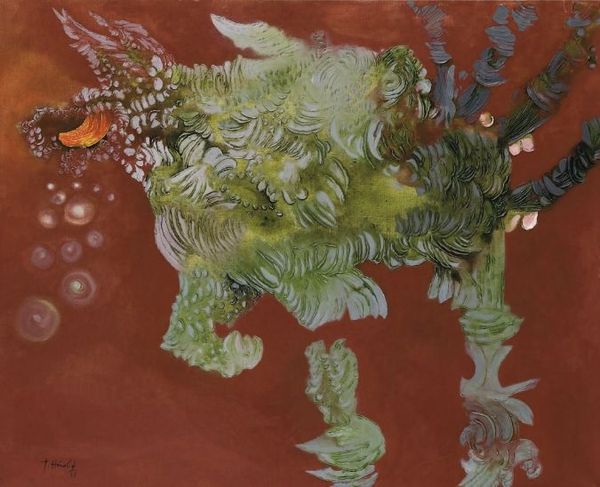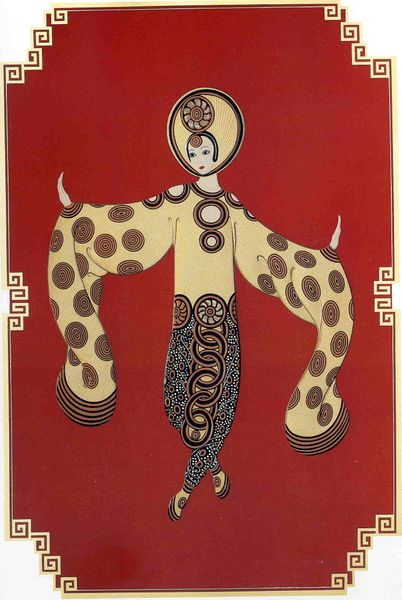
watercolor
#
animal
#
folk art
#
figuration
#
watercolor
#
folk-art
#
naive art
#
watercolour illustration
Dimensions: 25 x 38 cm
Copyright: Piroska Szanto,Fair Use
Curator: This playful watercolor, entitled "Little Kipling", comes to us from Piroska Szanto, dating to 1986. The work is reminiscent of naive art, and the scene it depicts features an armadillo and a jaguar rendered in Szanto’s signature folk style. Editor: It certainly strikes a whimsical note. The almost flat application of watercolor, combined with those open, ringed patterns on the jaguar, gives it a charmingly unrefined, childlike feel. There’s something innocent, almost folkloric about it. Curator: Yes, and the title of course evokes the author Rudyard Kipling, whose *The Jungle Book* arguably codified a certain understanding of the 'wild' for generations of readers. It brings into question the artist's own potential biases towards a kind of idyllic wild. Editor: And visually, it leans into those very stereotypes of an exotic, Edenic jungle. Note the color choices: that vibrant blue backdrop for the setting. The juxtaposition of the patterned animals alongside almost primitive looking botanical illustrations reinforce a constructed exoticism. The juxtaposition of these two creates a story. Curator: Do you see any parallels between folk art conventions and children's book illustrations of that time? Or is that simply my contemporary perspective projecting backwards? Is this merely a by-product of mass reproduction numbing us to individual creativity? Editor: Well, the symbols employed here - stylized flora, jungle creatures - are pretty universally recognizable. We, even today, see a lot of artistic and literal importing of animals into other cultural environments, making symbols more abstract and interpretable, though there has been some appropriation within that context. In the end, the painting becomes less about an armadillo, for instance, and more a symbol of something 'other' or exotic, as is true with Kipling's *The Jungle Book.* Curator: Perhaps Szanto seeks to disrupt that narrative? A little digression on how colonial literature shaped our perception of wild spaces. In this light, her artistic choices aren't accidental, but rather, conscious gestures to both use, and then critique. Editor: Fascinating. It enriches our understanding, adding layers of socio-political awareness to what might seem like a purely light-hearted scene. Curator: Precisely, these symbols are rarely straightforward! Editor: A painting that encourages us to question the visual tropes we take for granted and reflect on cultural narratives that permeate through popular imagination, lovely!
Comments
No comments
Be the first to comment and join the conversation on the ultimate creative platform.
